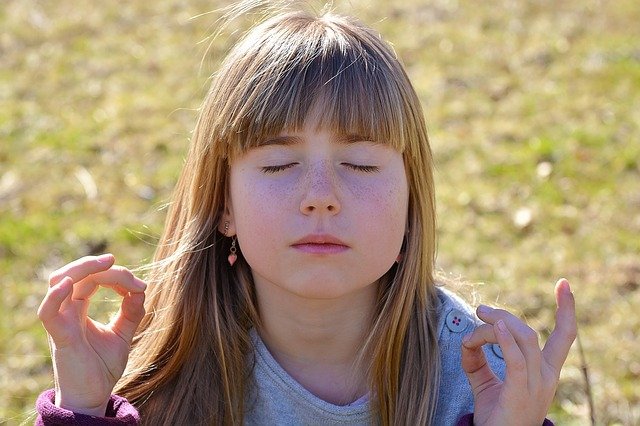 PM writes: “My children attend a Catholic Primary school in Australia. They tell me they do meditation at school and use the word ‘Maranatha.’ Is this in line with Catholic teaching? Should I exclude them from these sessions. I just read a blog of yours about centering prayer, (John Main). This seems to be exactly what they do, empty their minds and repeat the word ‘Maranatha’. What do you think?”
PM writes: “My children attend a Catholic Primary school in Australia. They tell me they do meditation at school and use the word ‘Maranatha.’ Is this in line with Catholic teaching? Should I exclude them from these sessions. I just read a blog of yours about centering prayer, (John Main). This seems to be exactly what they do, empty their minds and repeat the word ‘Maranatha’. What do you think?”
I think you should ask some serious questions about this practice because it sounds like they’re using mantras, which are common to eastern forms of meditation that strive to blank the mind. The Catechism of the Catholic Church explicitly lists “efforts of concentration to reach a mental void” as an “erroneous notion of prayer” (No. 2726).
Christian prayer is a dialogue with God; eastern meditation is a concentration exercise. The two are not synonymous. A person could use a sacred word, such as Jesus or Maranatha (which means “Come Lord!”), to keep their thoughts focused on God in prayer. But if the word is used as a mantra, as it is in Centering Prayer and Transcendental Meditation, then its purpose is to banish thoughts and keep the mind blank.
The problem with these techniques is that they are designed not for prayer but for bringing about a trancelike or hypnotic state, aka an altered state of consciousness. Hindu and Buddhist practitioners use either a mantra, a breathing technique or both, to bring about this state.
“The mind in both Hinduism & Buddhism is seen as part of the material body and therefore a barrier to spiritual enlightenment,” writes New Age expert Marcia Montenegro. “Meditation is designed to bypass the mind, using special breathing techniques. The ultimate goal is samadhi with no cognition, or absorption into a state of pure consciousness through disengaging the mind and a loss of self-awareness and subject-object awareness.”
In such a state, “rational judgment and discernment is suspended, and the mind is highly suggestible and open to any influences present,” she warns.
The altered state that comes about as a result of mind blanking exercises differs from that of spontaneous daydreaming, quiet contemplation or other forms of rational concentration.
“The euphoria or peace experienced by many at first is short-lived and deceptive,” Montenegro writes. “Instructors of these techniques who teach them as a spiritual discipline often warn students that psychic experiences and supernatural encounters are common, some of them frightening . . . The effect for some people is similar to a drug trip. It is this state of mind during which one is supposed to contact guides from the spirit world.”
The same problem exists with mindfulness meditation which is widely used in schools these days, introduced by administrators who were not aware of the Buddhist roots of these programs until lawyers from the American Center for Law & Justice (ACLJ) contacted them. The meditation aspect of these programs involves letting emotions and thoughts “float by” rather than confronting them.
“Encouraging students to merely ‘watch’ emotions and thoughts as ‘they float by’ is rooted in the principle that good and bad exist only in the mind, which is another dangerous idea in Buddhist meditation that permeates mindfulness practices,” writes ACLJ assistant counsel Christina Stierhoff.
“Instead of encouraging children to address the confusion they feel when a ‘bad thought’ enters their heads, mindfulness encourages them to ignore it. Viewing all thoughts as neutral eliminates the idea that thoughts and actions can be objectively right and wrong. Over time, bad thoughts left unaddressed lead to bad actions.”
Is this really something we want to expose our children to?
No school should be employing prayer techniques that involve mind blanking any more than they should be employing a hypnotist. Parents should be made aware of what is being taught and given the option to remove their children from these instructions.
The fact that a Catholic school is teaching this is just plain wrong. The doctors of our Church, such as Teresa of Avila and John of the Cross, wrote the book on meditation and contemplation. I have personally taught it to children ranging in age from five to teens in our Young Women of Grace program. When presented in an age-appropriate way, young people would be so engaged in this prayer that I literally had to tell them “time’s up…we have to move on now!”
The bottom line is that we don’t need to borrow anything from Hinduism and Buddhism! Exposing children to mind-blanking exercises instead of the rich tradition of authentic Catholic contemplation is not only unfortunate but completely misguided.
© All Rights Reserved, Living His Life Abundantly®/Women of Grace® http://www.womenofgrace.com
Women of Grace® has compiled a library of over 1400 articles on New Age and occult related material and has been offering them to the public for more than a decade – at no charge! If you appreciate our research, please prayerfully consider making a donation to support this vital work! Click here to donate!









